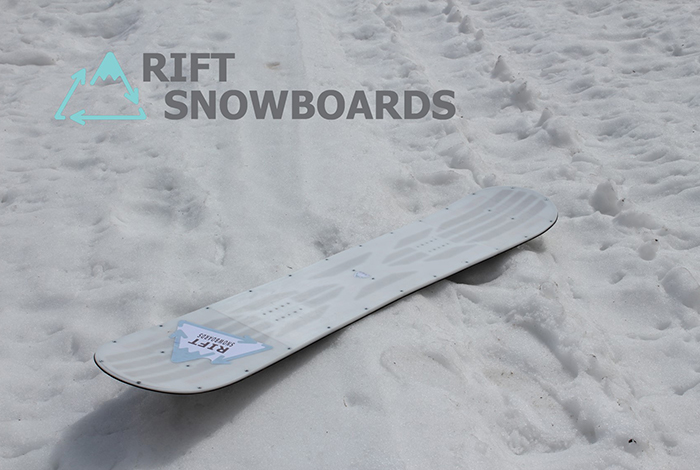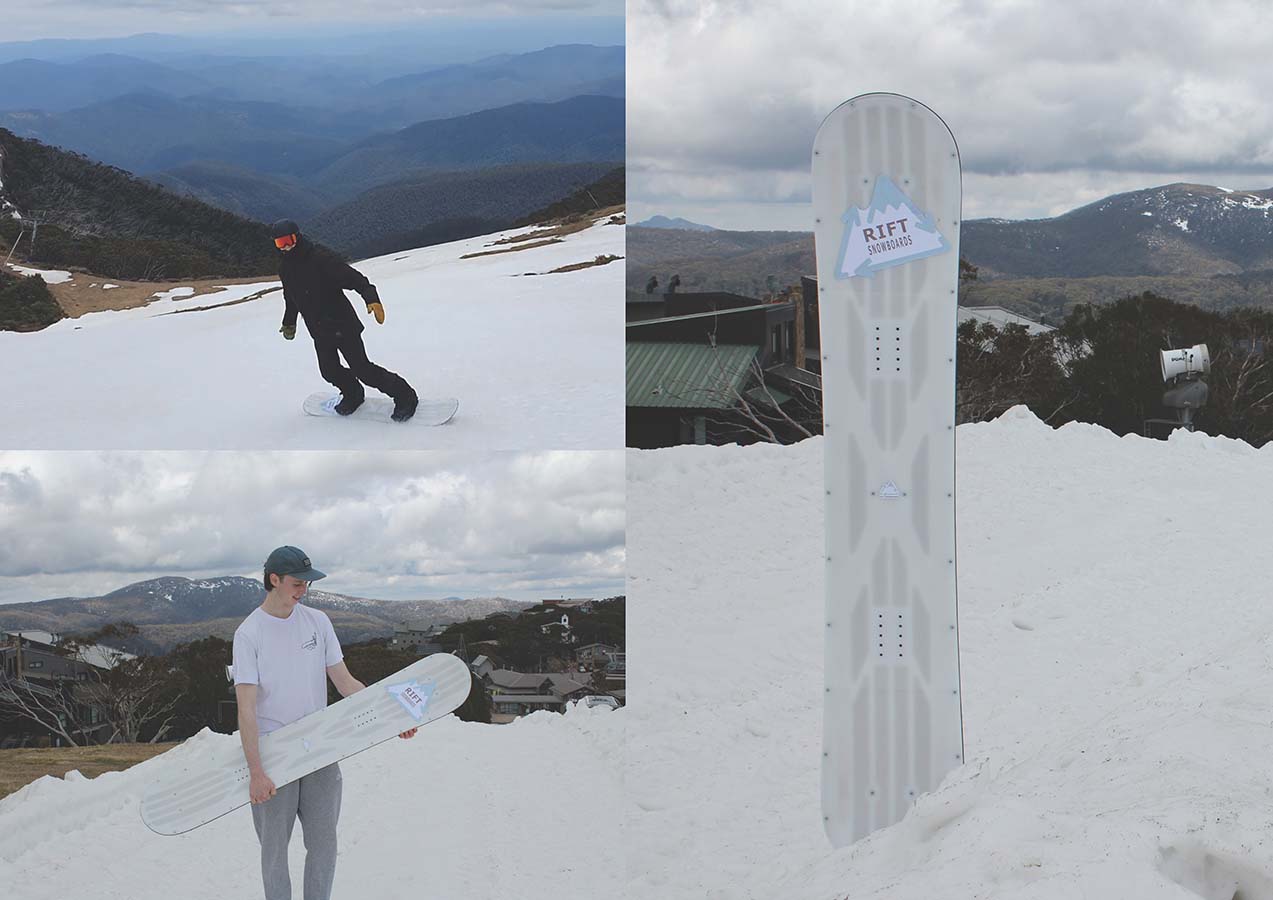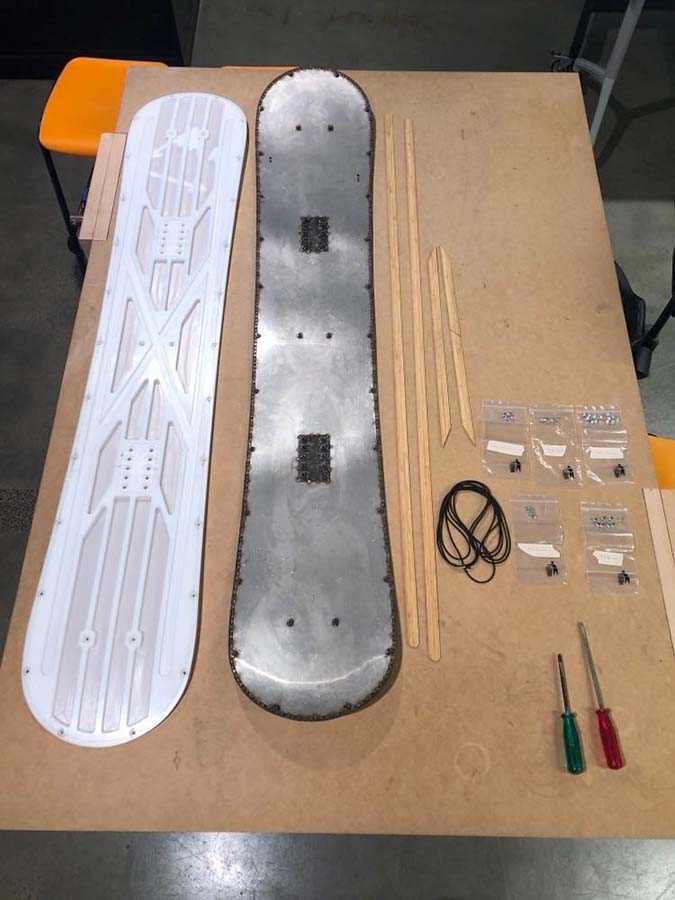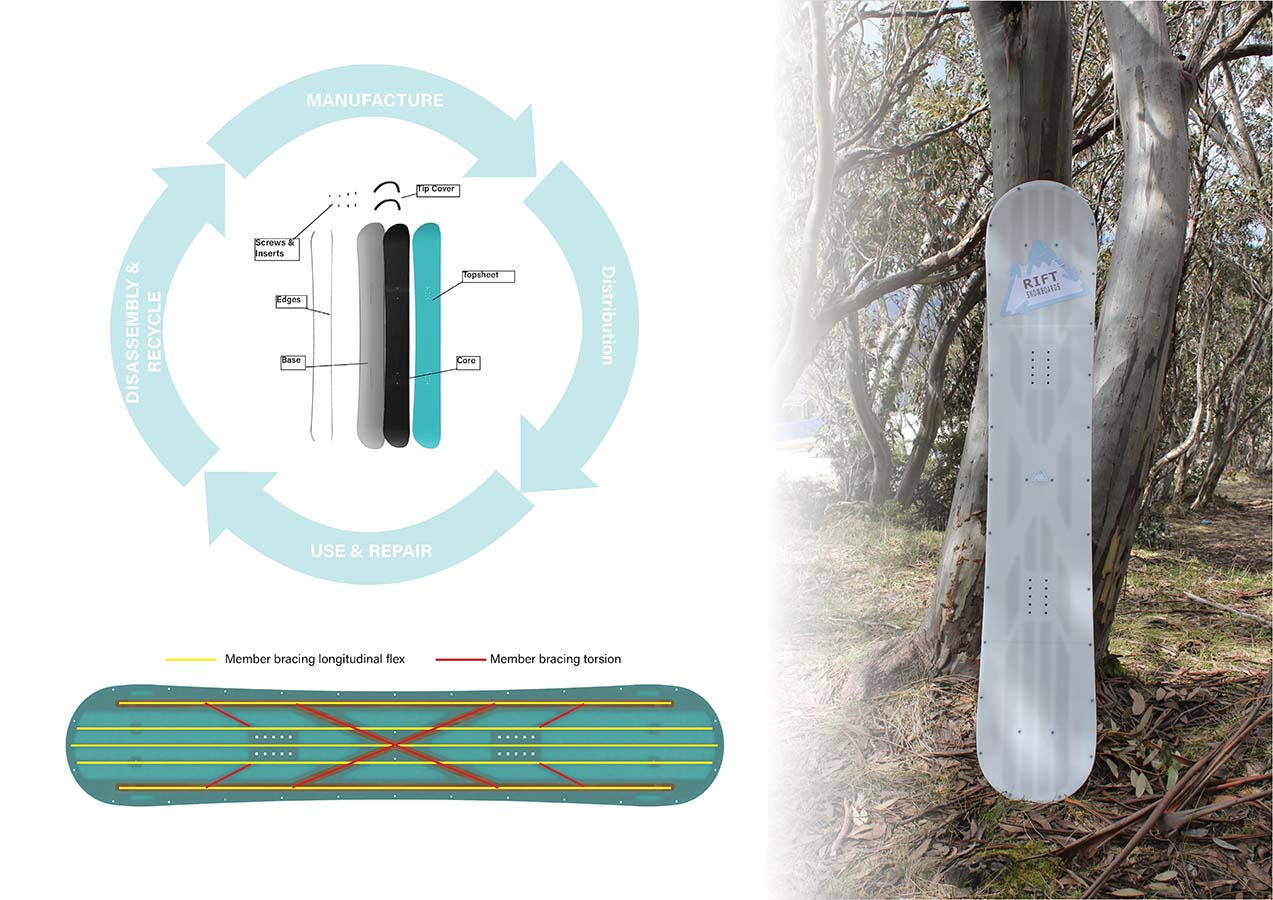The design process started by stripping back the current materials and properties of a snowboard to determine the required performance attributes. This led to material testing and scale prototyping through 3D printing of structures to ensure the right riding flexural qualities. Iterative sketching and consequently CAD models also guided scale and section prototypes of potential layer assembly options. This tested various methods of layer fastening with slots, heat sinks and screws as well as welding techniques to prevent base warpage.
Finite Element Analysis simulations informed flexural properties of the board before manufacturing, and injection molding simulation presented model feasibility if the design were taken to the mass market.
A full-scale prototype was developed using nut and bolt fastening. This tested two iterations of topsheet structure where one included a tapered shape which poses a higher cost. The full-scale prototype was tested on snow for riding quality and tested amongst users for ease of assembly and disassembly. The snowboard performed well on snow and in the assembly test. Lab tests of the board's flexural properties and durability, including ISO standards, informed the scope for future development of material choice and assembly options.
The design works by developing a method of snowboard construction that uses mechanical fasteners to combine each layer, without permanent bonds between different materials. This allows for full component disassembly and part replacement. Bolts pass through the topsheet to the nuts on the base to combine the layers. The bolts act against the shear force between the layers as the board bends and therefore stiffens the whole system. Once separated each material is recyclable and recoverable.









